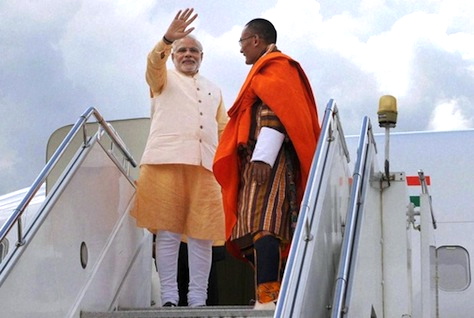It’s been just over a month since the historic election that vaulted Narendra Modi to the top of India’s government, and he took office on May 26, nearly four weeks ago.![]()
So how has his tenure as India’s prime minister gone so far?
Fairly smoothly, though of course it’s still far too soon to tell just whether Modi (pictured above with Bhutanese prime minister Tshering Tobgay), ushering in a new government with the slogan of ‘minimum government, maximum governance,’ can achieve the transformational economic and other policy achievements.
With his first day in office, Modi made global headlines by inviting Pakistani prime minister Nawaz Sharif to attend his swearing-in ceremony, which saw the two regional leaders hold closed-door discussions on Modi’s second day in office.
On June 1, his government marked the relative seamless creation of the new state of Telangana, out of what was formerly a much larger Andhra Pradesh, and the rise of its first chief minister Kalvakuntla Chandrashekar Rao (known as ‘KCR’), though KCR is already making headlines for his blunt approach to press freedom.
Modi has already started to outline his economic policy priorities, which will kick off with a concerted effort to lower inflation. His government will unveil its first federal budget in July, but for now, Modi has signalled that he’s willing to deliver tough policy to improve fiscal discipline that will almost certain including cuts to fuel subsidies and further liberalization of India’s economy, especially with respect to foreign investment. That was clear enough from Indian president Pranab Mukherjee’s address to the Indian parliament earlier this week.
Modi has also appointed a strong, streamlined cabinet that was met with approval among both domestic and global observers: Continue reading So far, so good? A look at Modi’s first weeks as India’s PM

